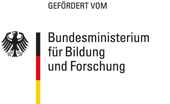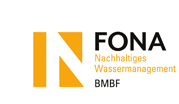Detection of chemically induced ecotoxicological effects in rivers of the Nidda catchment (Hessen, Germany) and development of an ecotoxicological, Water Framework Directive–compliant assessment system NiddaMan | Publikation | Bach, Fluss
Vorschau
Background Approximately 90% of German surface waters do not meet the objectives of the European Water Framework Directive (EU-WFD). This is primarily due to deficits in water body structure and biological quality components, which in turn are negatively affected by chemical pollution. In this context, hydromorphological restoration measures have often been conducted to improve habitat and species diversity and, therefore, the ecological status of water bodies. However, habitat improvement is not necessarily accompanied by biota enhancement and thus by the improvement of the ecological status of rivers. To prioritize water management measures, decision criteria for the water management practice are necessary, which enable the prognosis, whether chemical pollution and its resulting effects or other factors, such as structural deficits of the water bodies, are the main cause for the failure to meet the objective of a good ecological status. Results To address this need, we applied the freshwater mudsnail Potamopyrgus antipodarum and the amphipod Gammarus fossarum in active monitoring campaigns and in laboratory experiments with combined water/sediment samples and analyzed water and sediment samples with in vitro assays quarterly over the course of 1 year to provide evidence and guideline to assess if chemical contamination is a relevant stress factor for the aquatic biodiversity in rivers of the Nidda catchment (Hessen, Germany). On the basis of these results, an ecotoxicological, WFD–compliant assessment system was developed which, in comparison with the ecological status classes of the EU-WFD, permits the identification of the probable causes for the failure to meet the objectives of the EU-WFD. From these findings, recommendations for action were derived for the implementation of priority measures in water management practice. For the rivers Nidda, Usa, and Horloff, we identified a need for action to improve water and sediment quality at all investigated sampling sites except for the reference sites in the headwaters. The ecotoxicological assessment system also highlighted that hydromorphological restoration measures on their own will not lead to a good ecological status of rivers, as long as water and sediment quality are deficient.
Zum Produkt
Verweis: https://enveurope.springeropen.com/articles/10.1186/s12302-019-0190-4
Ansprechperson
Prof. Dr. Jörg Oehlmann
T. +49 (0)69-798 42142
M. oehlmann@bio.uni-frankfurt.de


 English
English



